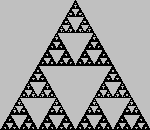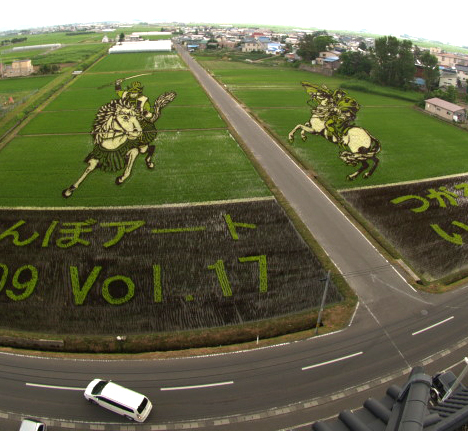I usually end each “7 Things” post with a lighter item. Having beaten through my backlog of resources, there are a bunch of visual links left over. So, here’s a post of pure fluffy desserts. All images are clickable for more information.
First, camels:
and zebras:
These are now a part of the “Too True to be Good” gallery.
More information about these on Geeks3D.
Crayola’s Law is that the number of crayon colors doubles every 28 years:
I just plain liked this animated Sierpinski triangle someone used as a profile image (thanks, Evan):
Nice concept, the equations of art:
Here’s an art something (not embedded here, you actually have to click), but I don’t have the OCD needed to see the image hidden.
Perhaps not massively visual, but amazing nonetheless, various prime number calculators run using the Game of Life. Here’s the Mersenne prime generator:
I’m starting to believe everything can make a pixel. Here’s coffee:
And rice plants (thanks, Doug):
For a finish, here’s a history of 100 years of film VFX in five minutes:
Well, wait, there’s one more thing… Naty and I love the realistic CG in this piece, The Third & The Seventh. I’m not going to embed it here; follow the link and definitely watch it fullscreen. More amazing still, it’s the work of one guy, Alex Roman. The only elements that are not CG are the photographer, the pigeons, the time-lapsed sky and growing flowers, and the jet. There’s a compositing breakdown video of various scenes, showing the techniques used. That said, Naty likes it but for my tastes it’s pretty boring to watch for more than half a minute, as most CG demos are (jaded? Maybe; mostly, I just like plot).
If your interest wanes, skip to 8 minutes in (well, you can’t skip ahead with Vimeo; just let it load and come back later). Perhaps that’s the best way to appreciate the clip: play it as a loop and look at it now and then, in small doses. There’s a heavy hand with the focus/depth-of-field effect at times, but in one sense I do like seeing this effect overused: it’s like watching CPU cycles burn before my very eyes, knowing how much the algorithm costs. Last niggle (and I should probably be soundly thrashed with a riding crop for noting these things, but it stuck out for me): the wind turbines turn backwards. Quibbles aside, the images here are so much better than any I will ever make that I’m a total admirer of it on the “technical chops” and “incredible dedication” levels.








